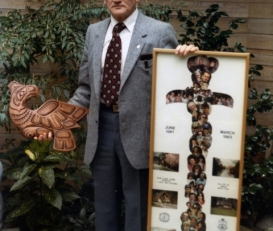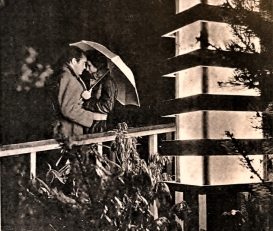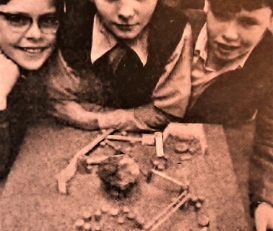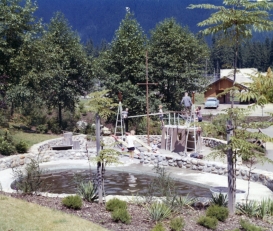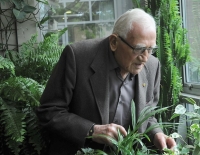
Times were difficult in Rhineland when Heinz Hermann Gunter Berger was born. Germany was struggling to recover from the First World War, still occupied by foreign troops, so young Heinz spent much of his time on his grandfather’s farm.
Heinz became very interested in growing things and ultimately began horticultural training, but his life was again interrupted by war. In 1941, he was drafted, becoming an anti-aircraft gunner, then a prisoner of the Red Army. With some friends and a fishing boat, he managed an escape. But with the war ending and Europe overwhelmed, it took many months before he made his way back to German shores.
Berger was assigned farm work, and by 1948, was finally free to complete his education, earning a landscaping/horticulture degree in 1950. A year later, he headed for Vancouver. (In retirement, he would pen his Memoirs, defining his life as An Adventure on Two Continents – Ending in a Place of Excellence – West Vancouver.)
He worked first as a railroad labourer, but soon, found enough gardening work to bring his family to Canada. His business grew. He joined forces with a landscape architect from Norway, Einar Brodersen, and then with nursery owner Lloyd Smith, and was soon running two businesses.
A decade later, in 1961, Berger joined West Vancouver Parks and Recreation, in part because he had developed a keen interest in children’s playgrounds. For his first project, Glenmore Park, Berger’s design featured all the usual playing fields and amenities, but he added an unusual element along the creek: a children’s adventure play area. He fashioned a ship’s bridge overlooking a wading pool, and he used driftwood and natural materials beside the obligatory teeter-totters. Then, to pay for it, he went door-to-door soliciting donations from residents. The community outreach and innovative naturalistic design changed the nature of playscapes in West Vancouver and brought Berger international recognition.
For over 22 years, he worked to define the public landscape of West Vancouver. In 2015, the North Shore News profiled him as a living community treasure, and celebrated his legacy: the playscapes from Glenmore to Horseshoe Bay, the Gleneagles Golf Course, the fitness circuit at Ambleside, the recreation complex and seniors centre, the first design of the Seawalk, the centre-line Dundarave flower beds (new to British Columbia.)
Over the years, Berger became a founding member of the BCSLA, working with Philip Tattersfield to develop B.C.’s landscape and horticultural training programs.
During his final years, he spent most mornings in the conservatory of the garden he designed for his retirement home. His apartment overlooked the garden, which was named for him.
Sources
Information drawn in part from “Memory Lane: Parks Man Pens Memoir,” by Laura Anderson, in North Shore News, October 11, 2015.
West Vancouver Archives. Oral history Interview with Elspeth Bradbury, 2000.
Photo Credits
1 Courtesy North Shore News. Photo Mike Wakefield
2 From the West Vancouver Archives: Heinz Berger’s retirement in 1983/ Glenmore Park playspace/ Whytecliff Gazebo
3. Heinz Berger’s autobiography/ Elementary students lay down their own playground, following a Berger design / Lamps at Memorial Gardens, designed by Berger
